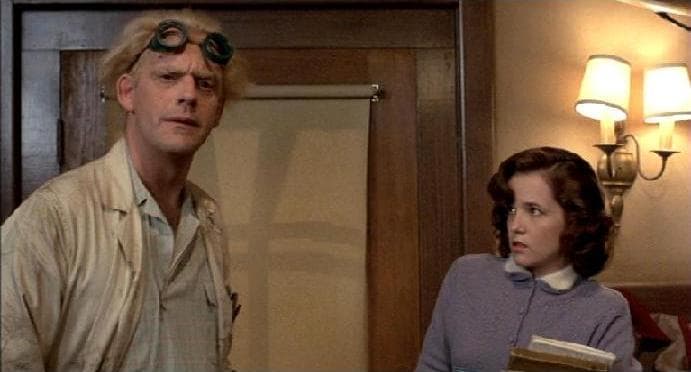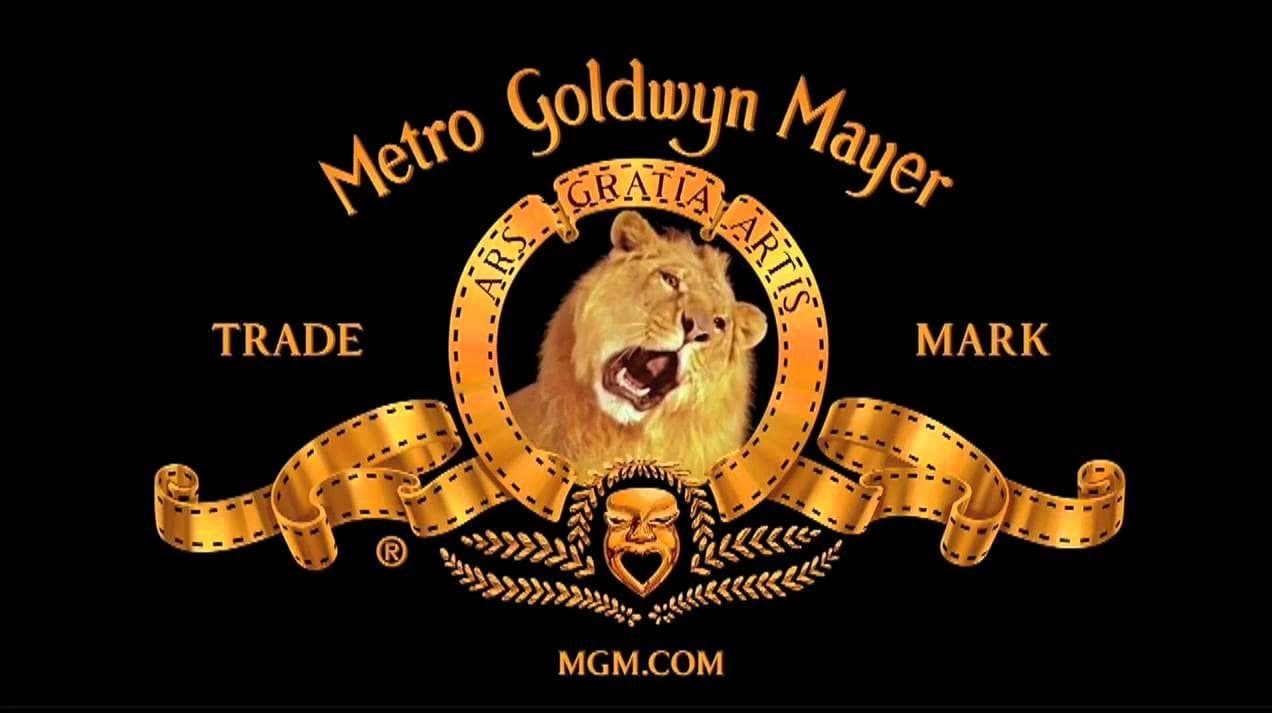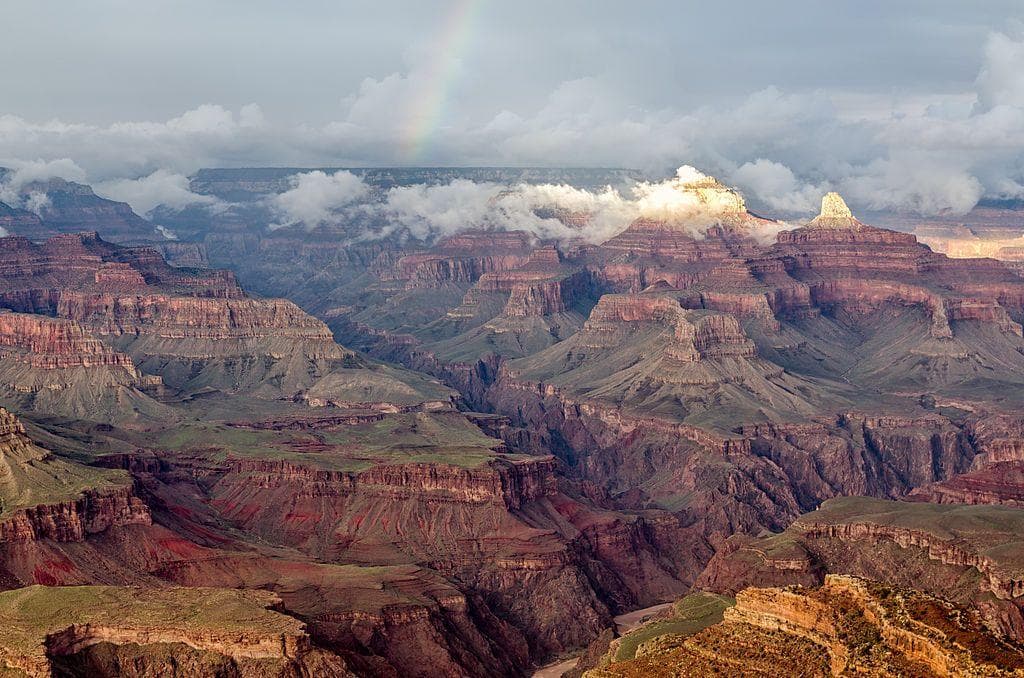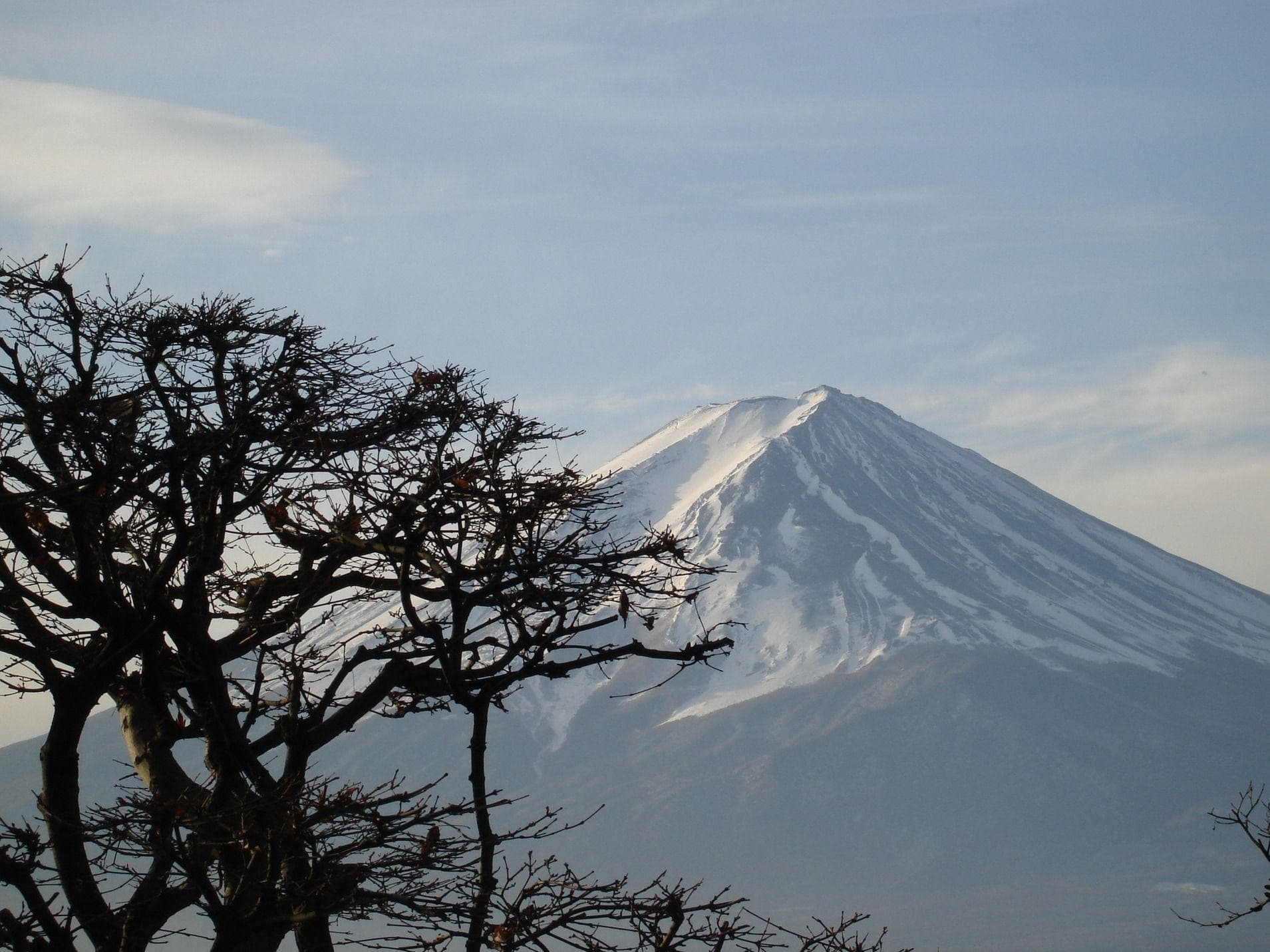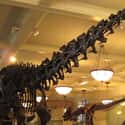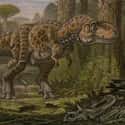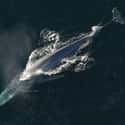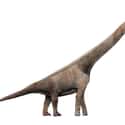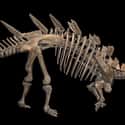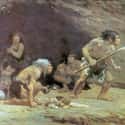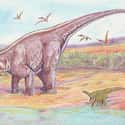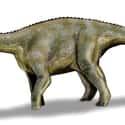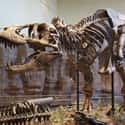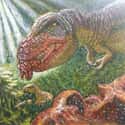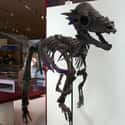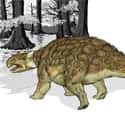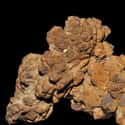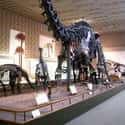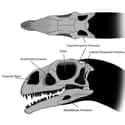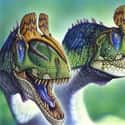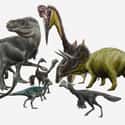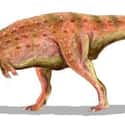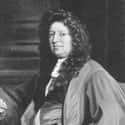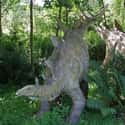-
(#1) Some Dinosaurs May Have Had 300-Year Lifespans
The lifespans of dinosaurs vary significantly. For example, some scientists believe Apatosaurus could live for 300 years. The typical lifespan for dinosaurs is thought to be much shorter, averaging 30 years for carnivores and 70 to 80 years for herbivores. Carnivores like T-Rex would have had to fight for its food and survival much more often than its plant-eating counterparts.
Based on the size of certain mature dinosaurs, some scientists believe the growth rate could have occurred over hundreds of years.
-
(#2) The Time Between The Existence Of Stegosaurus And T-Rex Is Longer Than The Span Separating Humans And Dinosaurs
Stegosaurus lived about 150 million years ago during the late Jurassic period. Meanwhile, fossil evidence indicates Tyrannosaurus Rex lived during the Cretaceous period, roughly 65 million years ago. This means Stegosaurus was gone for 80 million years before T-Rex reigned, a longer span than the gulf of time separating T-Rex and humans.
-
(#3) The Blue Whale Is Larger Than Any Dinosaur
Argentinosaurus (found in Argentina in 1987) is the largest dinosaur ever discovered. Fossil evidence indicated it was more than 130 feet long and probably weighed between 70 and 80 tons. Even with that size, the Argentinosaurus still wasn't as large as the modern blue whale. Blue whales may reach 100 feet in length and can weigh more than 191 tons.
While Argentinosaurus might be longer, the overall weight of the blue whale has earned it the title "Biggest Animal of All Time."
-
(#4) Sauroposeidon May Have Been Six Stories Tall
Sauroposeidon, whose name means "earthquake god lizard," has been identified as the tallest dinosaur on record. Researchers at the University of Oklahoma discovered this sauropod in 1994. Fossils from Sauroposeidon, found in Oklahoma, Texas, and Wyoming, revealed its neck was one-third longer than the next largest brachiosaurid.
Scientists estimate Sauroposeidon weighed more than 60 tons, stood more than 60 feet tall, and was about 100 feet long.
-
(#5) Dinosaurs Had Shorter Days And Longer Years
Each year, it takes a little longer for the Earth to rotate on its axis. The difference is only a millisecond but, since the days of the dinosaurs, that time has added up. Two hundred million years ago, the average day spanned about 23 hours and one year lasted a whopping 385 days.
-
(#6) Kentosaurus Could Swing Its Tail Faster Than 80 MPH
Discovered in Tanzania in 1915, Kentosaurus was an armored herbivore. Kentosaurus lived during the late Jurassic period - about 150 million years ago - and its back legs were twice as long as its front appendages.
Its spiked tail, which is where Kentosaurus gets its name, could swing up to 40 meters per second (about 89 miles per hour) based on virtual models constructed by paleontologist Heinrich Mallison.
-
(#7) Dinosaurs Had Really Big Fleas
In 2012, scientists in Mongolia identified two types of fossilized fleas: Pseudopulex jurassicus and Pseudopulex magnus. These flea species lived between 125 and 165 million years ago and were much larger than modern varieties. These dinosaur fleas were close to an inch long; they had claws and a mouth large enough to pierce the toughest skin.
With their serrated mouths and needle-like beaks, a bite from one of these fleas would have been particularly uncomfortable.
-
(#8) Humans Have Lived About 1% As Long As Dinosaurs Did
Dinosaurs and humans never coexisted, and humans have been around for a small fraction of the time dinosaurs roamed the Earth. The Mesozoic Era occurred roughly 66 to 252 million years ago and is broken down into the Triassic, Jurassic, and Cretaceous periods, all of which featured dinosaurs.
Alternatively, the earliest humans appeared about six million years ago during the Miocene Epoch. Homo sapiens emerged roughly 300,000 years ago, a mere hiccup in time compared to the almost 200 million years dinosaurs dominated the planet.
-
(#9) Apatosaurus Could Break The Sound Barrier With Its Tail
Apatosaurus lived 150 million years ago and boasted an impressive 90-foot length with a fast and ferocious tail. Based on computer simulations, the tail of an Apatosaurus moved in supersonic fashion when the animal needed to defend itself, communicate, or court another dinosaur. This was rapid enough to break the sound barrier.
However, some are not convinced by the simulation and have argued that the motion would have damaged the tail and caused it to break after just a few supersonic tail snaps.
-
(#10) Nigersaurus Had 50 Rows Of Teeth
Associated with the Sahara Desert in modern-day Niger, Tunisia, and Algeria, Nigersaurus was a herbivore that lived 100 to 120 million years ago. Paleontologists discovered that Nigersaurus had more than 500 teeth, arranged in rows of 50 in the front of its squared-off jaw. With its weak spine, Nigersaurus was unable to hold its head up, so it roamed like a grazing cow.
This dinosaur presumably replaced its teeth every 15 days or so.
-
(#11) Scientists Still Don't Know Exactly How Dinosaurs Mated
Because dinosaurs had a cloaca, researchers look to birds, reptiles, and other creatures with comparable features for guidance about how dinosaurs might have mated. The general conclusion is that, for many species, a male mounted a female from behind.
However, for Stegosaurus, this wouldn't have been possible. This led to speculation that the males may have stood while the female rested on her side or that they met belly-to-belly.
-
(#12) Dinosaurs Grew Quickly And Built Muscle While Still In Their Eggs
The discovery of Lufengosaurus eggshells and tiny Lufengosaurus bones in China in 2013 gave scientists insight into the speed at which dinosaurs grew while still in an egg. According to the research, even while in their shells, dinosaurs flexed their muscles to encourage bone development.
Dinosaur bones reveal that females started laying eggs before they reached adult size. Those same bones also indicate dinosaurs grew quickly. Evidence also suggests dinosaurs engaged in basic tasks, such as feeding their nestlings.
-
(#13) Many Dinosaurs Didn't Have Scales - They Had Feathers
Dinosaurs have been depicted with scales almost as long as paleontology has been around. However, recent discoveries indicate a larger number of dinosaurs actually had feathers. As ancestors of modern birds, dinosaurs likely had elaborate, colorful plumes that resemble those of peacocks or even flamingos.
The exact function of the feathers remains unknown, and dinosaurs with scales are not completely discounted. Tyrannosaurus Rex, for example, is still portrayed with scales and feathers, though evidence suggests it may not have boasted feathers.
-
(#14) Mary Ann Mantell Discovered Some Of The First Dinosaur Fossils
Surgeon and hobby geologist Gideon Mantell had an affinity for collecting fossils. When he married Mary Ann Woodhouse in 1816, the two collected fossils together. They enjoyed long walks; on one occasion, Mary Ann spotted tooth-like fossils mixed up in gravel. She showed the findings to her husband, who later researched the bones and was credited with discovering the Iguanodon.
Gideon published his findings in 1825, and Mary Ann drew the sketches for their shared academic work.
-
(#15) Pterodactyl Wasn't A Dinosaur
There are two established groups of dinosaurs: Saurischian (lizard-hipped) and Ornithischian (bird-hipped). These categories then break down into smaller groups, none of which include winged creatures like Pterodactyls. These creatures were initially discovered in 1784 and were classified as flying reptiles or pterosaurs. As such, they don't fall into either one of the commonly accepted dinosaur categories.
Pterosaurs split off early from the dinosaur family tree, making them distant cousins that share Avemetatarsalia ancestors.
-
(#16) Pachycephalosaurus Had An Nine-Inch Thick Skull
Pachycephalosaurus fossils, discovered in Montana in 1938, have since been found in Canada, parts of Asia, and on the island of Madagascar. Based on this evidence, the Pachycephalosaurus skull was more than 30 times thicker than that of a human. The bipedal herbivore could weigh more than 900 pounds and may have used its skull as a headbutting defense or mating tool.
Contradictory evidence suggests that the dome was too weak for headbutting and the thick skull may have existed purely for identification purposes.
-
(#17) Ankylosaurus Cooled Off Through Its Nostrils
Ankylosaurus, best known for its club-like tail and thick armor, had nasal passages used to keep its brain cool. Initially, scientists believed the large number of nasal canals in the Ankylosaurus skull heightened smell, which allowed the dinosaur to make elaborate sounds.
They also believed that this also helped it breathe. Through simulations, however, researchers found complex airways that allowed the dinosaur to cool down warm air with each inhalation. Basically, warm air was diverted to the lungs, while cool air was routed to the brain.
-
(#18) Dinosaur Feces Challenge The Herbivore-Carnivore Distinction
Dinosaur droppings provide a great deal of information about dinosaur diets. In 2017, coprolites, or fossilized feces, changed notions that Hadrosaurs were pure herbivores. Instead, this new research revealed that the duck-billed dinosaurs ate crustacean shells in rotted wood.
Scientists have also found evidence of worms and other parasites in dinosaur excrement, both of which are remarkable from an archaeological perspective but don't muddy the waters of the herbivore/carnivore distinction in the same way as the Hadrosaur coprolite discovery.
-
(#19) Brontosaurus May Not Have Existed
Some scientists determined that Brontosaurus never existed. The origins of Brontosaurus dated back 130 years to the so-called "Bone Wars" between paleontologists O.C. Marsh and Edward Drinker Cope. The two men competed to identify new dinosaurs. This contest resulted in the misidentification of the Apatosaurus skull versus that of Brontosaurus. This mistake was rectified during the 20th century and Brontosaurus was scrapped from existence.
In 2015, researchers revisited the idea that Brontosaurus was its own species and genus of dinosaur based on its distinct features. The return of Brontosaurus is the result of technological advancements discovering subtle differences from Apatosaurus.
However, not everyone is convinced as many paleontologists insist more data is necessary.
-
(#20) Dinosaurs Had Windows Called Fenestrae In Their Skulls
Fenestrae, holes on the front or side of dinosaur skulls, helped with movement and function. Front fenestrae lightened the weight of the skull, which increased movement when eating. Mandibular fenestrae in the jawbone increased muscle and strength.
Temporal fenestrae made the skull lighter and were perhaps adapted over time as dinosaur bodies evolved to conserve energy.
-
(#21) Many Dinosaurs Were Smaller Than Originally Thought
While massive dinosaurs may get all the attention, smaller species were much more plentiful. The discovery of the Acrotholus audeti in 2013 resulted in a revision of the timeline created for small, ornithischian dinosaurs - or bird-hipped species. Researchers found evidence of great diversity among this specific group. For instance, the Acrotholus audeti had a more developed, thick skull. This indicates that it evolved from a diverse collection of older small dinosaurs.
Additionally, scientists have posited that estimates of dinosaur size have been vastly overstated, sometimes twice as big as their actual body mass. This doesn't mean that large dinosaurs didn't exist, but rather that most known dinosaurs species were smaller than portrayed.
-
(#22) Dinosaurs May Have Engaged In Mating Displays
In 2005, paleontologists found evidence of medullary bones, a type of bone with extra calcium that develops prior to and while laying an egg. With fertility in play, dinosaurs may have then participated in a dance or ritual of sorts to get in the mood.
Based on irregular patterns of scrapings on dinosaur fossils found in Colorado, paleontologists believe that the creatures participated in energetic physical displays before mating, much like modern birds.
-
(#23) Dinosaurs Had One Orifice For Waste And Reproduction
Much like modern birds and reptiles, dinosaurs had a single, multipurpose orifice called a cloaca. It functioned to remove urine and excrement and was also used for reproductive purposes. It is unclear whether male dinosaurs had any other external reproductive organs.
However, they likely engaged in a "cloacal kiss," which is the process of fertilization between male and female bird species.
-
(#24) Majungatholus Was A Cannibal
There is evidence that Majungatholus Atopus ate its own kind. These carnivores lived on Madagascar during the Cretaceous period and could grow to more than 25 feet in length. Based on skull fossils excavated from Madagascar, teeth marks in the skull of one Majungatholus matched those from a fellow Majungatholus nearby.
The Majungatholus didn't only eat each other; they also ate other types of dinosaurs. This instance of cannibalism may have been an act of desperation more than aggression.
-
(#25) Dinosaur Bones Were First Examined During The 17th Century
The discipline of paleontology officially began during the early-to-mid 19th century. However, researchers had access to dinosaur bones much earlier. During the late 1600s, Oxford University's Ashmolean Museum keeper Robert Plot assessed an unidentified thigh bone, perplexed by its size. He surmised it was from a massive human, but in reality, it was likely a dinosaur fossil.
During the 17th and early 18th centuries, scientists continued to encounter dinosaur bones, not realizing what they had. It wasn't until Richard Owen declared a series of unidentified bones as those of dinosaurs - Greek for "terrible lizards" - in 1842 that the now-familiar idea of these creatures began to take shape.
-
(#26) Stegosaurus Didn't Have A Second Brain In Its Tail
Researchers initially believed Stegosaurus, a member of the Stegosauridae family of spiked dinosaurs, had a walnut-sized brain. This dinosaur sometimes stretched more than 30 feet in length and had massive spikes and a deadly tail; thus, the brain-to-body ratio was puzzling.
Scientists once posited that Stegosaurus may have had a second brain in its rear end, but that notion was disproved. Now, the working theory is the dinosaur had one brain closer to the size and shape of a hot dog.
New Random Displays Display All By Ranking
About This Tool
One of the most shocking things about the earth is that it has a history of more than 4.5 billion years. About 3.8 billion years ago, single-celled organisms were born. About 230 million years ago, dinosaurs galloped on the earth and were replaced by early humans about 200,000 years ago. These mysterious and beautiful ancient species have some little-known facts that will make you doubt their existence on earth.
Paleontologists still don't know much about dinosaurs. Tens of millions of years ago, many species of dinosaurs lived on the earth, they had an amazing life span and extremely fast running speed. Here the random tool collected 26 amazing facts about dinosaurs.
Our data comes from Ranker, If you want to participate in the ranking of items displayed on this page, please click here.



